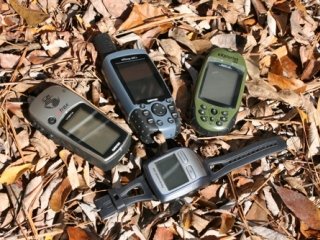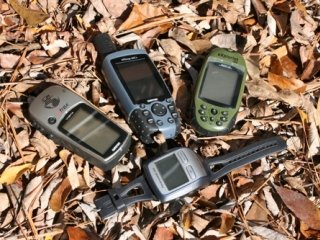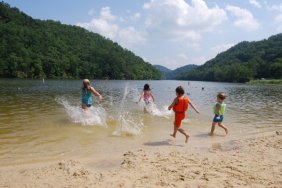 While the preparation for an ice fishing trip to a new lake is arguably the most crucial step in such an endeavor, there are other precautions and practices that anyone trying out an unfamiliar lake would do well to employ. Making sure to pack the appropriate gear, and then ensuring that you use said gear wisely and properly on the ice, are also vital factors when it comes to staying safe.
While the preparation for an ice fishing trip to a new lake is arguably the most crucial step in such an endeavor, there are other precautions and practices that anyone trying out an unfamiliar lake would do well to employ. Making sure to pack the appropriate gear, and then ensuring that you use said gear wisely and properly on the ice, are also vital factors when it comes to staying safe.
Every angler should always carry some type of GPS device, especially those who frequent large bodies of water or backcountry fisheries. Not only do these electronic wonders allow you to pinpoint your own location while providing you with a map of the area, but they’ll also come in handy when you want to log a bountiful spot on the water. Use your GPS to track waypoints, such as trailheads or access points to the lake, and it’s a good idea to let someone staying behind know the coordinates where you’ll be.
Without the ability to move to and fro at your leisure with the aid of a boat, drilling holes throughout the ice to find a good hole can be tiring. You’ll need to keep an eye on the structures and geography of the surrounding shoreline. Drilling holes is not an arbitrary process, and to ensure that you cover the ice in an optimal fashion, drill your holes in specific patterns to match the structure of the lake. For instance, drilling holes in a grid pattern over a point is the best way to cover such a spot, while staggering your holes in a zig-zag pattern is the best way to locate and fish weed beds. On the ice, relocating to find a better spot can be as easy as moving a few feet to the left or right, and using the right pattern to ensure that you cover the water in the most efficient way is important to ensuring that you go home with a full cooler.
After doing some research on effectives lures for the lake where you’ll be fishing, you’ll need to be patient and utilize your bait wisely to make sure they’ll produce numbers for you. If you’ve just made a hole and you’re curious to see if there are any fish nearby, try lures that flash or vibrate, as such actions will attract fish from a distance. Use finesse jigging to entice a bite and, if nothing has hit yet, switch to smaller lures. Don’t waste a lot of time, though, if there’s no action, and move to a new spot after ten minutes or so without a bite.
Any angler can tell you that fishing a new lake is both different and the same as fishing any other body of water. While you may not know what lures to throw, what presentations work, or the layout of the structure and cover, you’ll always use what you know until you find something that works. Ice fishing is no different and, after some preparation, research, and then using your tackle and equipment in an optimal way, you can fish a new lake through the ice just as well as an angler who calls such a lake his home turf.








